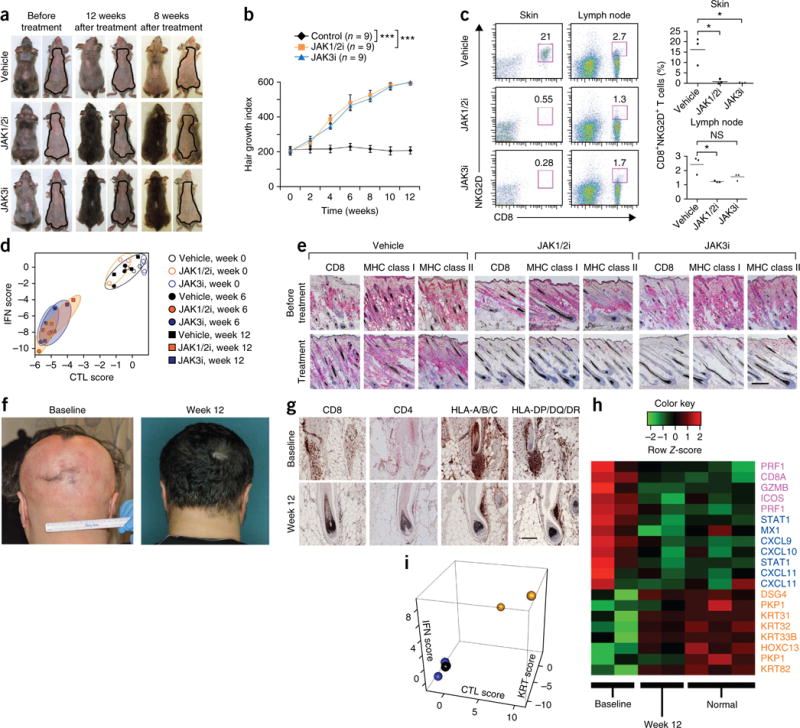Figure 4.

Reversal of established AA with topical small-molecule inhibitors of the downstream effector kinases JAK1/2 or JAK3, and clinical results of patients with AA. (a) Three mice per group with long-standing AA (at least 12 weeks after grafting) treated topically on the dorsal back with 0.5% JAK1/2i (center), 0.5% JAK3i (bottom) or vehicle alone (Aquaphor, top) by daily application for 12 weeks. This experiment was repeated three times. Hair regrowth at an additional 8 weeks after treatment withdrawal is also shown. (b) Time course of hair regrowth index shown as weeks after treatment. (c) The frequency (number shown above boxed area) of CD8+NKG2D+ T cells in the skin of mice treated with JAK1/2i or JAK3i compared to vehicle control mice (mean ± s.e.m., n = 3 per group, *P < 0.05, **P < 0.01, statistical methods described in the Supplementary Methods). NS, not significant. (d) The ALADIN score shows treatment-related loss of CTL and IFN signatures, given as log2 mean expression Z-scores as indicated in the Supplementary Methods. (e) Immunohistochemical staining of mouse skin biopsies shows treatment-related loss of expression of CD8 and MHC class I and II markers. Scale bar, 100 μm. (f) Treatment of patient 3 with AA, who had hair loss involving >80% of his scalp at baseline, with ruxolitinib and hair regrowth after 12 weeks of oral treatment. (g) Clinical correlative studies of biopsies obtained before treatment (baseline) and after 12 weeks of treatment of patient 2, including immunostains for CD4, CD8 and human leukocyte antigen (HLA) class I (A, B, C) and class II (DP, DQ, DR). Scale bar, 200 μm. (h,i) RNA microarray analysis from treated patients 1 and 2 with AA (before treatment versus after treatment versus 3 normal subjects) presented as a heatmap (h) and as a cumulative ALADIN index (i). KRT, hair follicle keratins.
